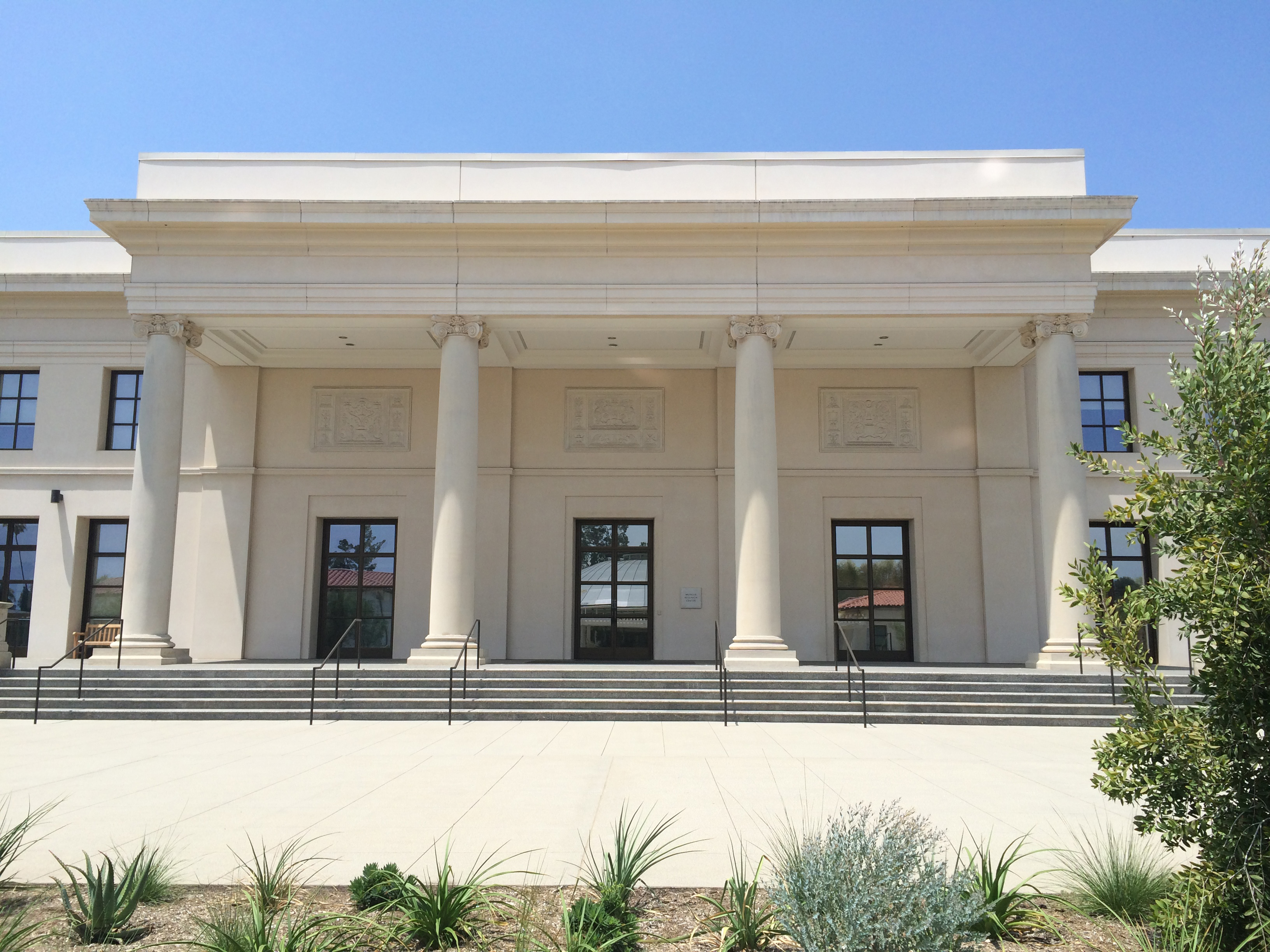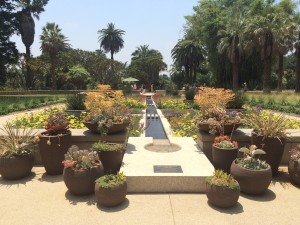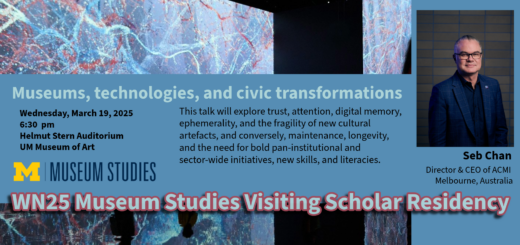A letter from the Huntington Library, Art Collections, and Botanical Gardens

This Letter from the Field was shared with us by Alice Tsay – MSP13
Greetings from San Marino, California! One month into my sun-saturated practicum at The Huntington Library, Art Collections, and Botanical Gardens, I’m finally losing the pallor earned from four years of being a doctoral student in a cold climate. Weather aside, much about The Huntington feels familiar. Scholars poring over books in reading rooms. Families pushing strollers along leafy paths. A special room full of library treasures, including Audubon’s Birds of America. A huge red sculpture (The Huntington’s is by Alexander Calder, whereas the UMMA’s is by Mark di Suvero). In fact, while we were celebrating the rare flowering of the agave plant at the Matthaei Botanical Gardens last spring, The Huntington was showing off its own unusual bloom—the corpse flower, named for its killer scent.
One major difference is that here, much of the cultural wealth originated with two people, Henry and Arabella Huntington. This in itself isn’t unusual: many museums and public institutions formed at the turn of the century were similarly bankrolled and stocked by affluent Gilded Age collectors with particular (and occasionally peculiar) tastes. The Huntington’s genesis as an elite private collection does, however, provide an interesting backdrop for my work this summer.
Under the supervision of Catherine Allgor, the Nadine and Robert A. Skotheim Director of Education, I am exploring the ways in which The Huntington can build on its curriculum and programming to better feature the diversity of its holdings and engage with a broader public. Currently, I am in the first phase of the project, which involves identifying materials in the three collection areas (library, art, and botany) created by or associated with underrepresented groups of people. While the task seems daunting, I’ve gotten a jump start from many curators and staff members who have generously spent time telling me about materials under their aegis and suggesting strategies for navigating The Huntington’s unique ecosystem of information.
In the second phase, I will re-emerge from the inner reaches of The Huntington and turn my attention outward, to the experience of its visitors. What kind of programs, teaching materials, and tour content can we provide to give voice to historical figures whose side of the story has largely been ignored? When we tell visitors about how the San Marino Ranch became The Huntington of today, for example, how can we bring to life the contributions of the laborers who helped bring back the massive cacti from Mexico or worked through the night to save the citrus groves during winter frosts? And how do we make space at The Huntington not only for a more multifaceted narrative of the past, but also for greater inclusiveness in the present?
I’ll be formulating answers to these questions within context of the excellent work the Education Division is already doing to promote access to its collections and improve the quality of education in the region. For instance, The Huntington recently hosted a three-day arts integration workshop for nearly a hundred schoolteachers from the Pasadena Unified School District. Developed collaboratively between PUSD content specialists and Huntington Art Education Manager Guy Fish, the workshop trained teachers to incorporate Common Core standards by having them enter the trenches and take part in project-based learning themselves!
Beyond giving me an opportunity to think deeply about formal and informal learning, this practicum has—happily—also produced some concrete leads for my dissertation work on nineteenth- and early twentieth-century British food culture. Once, as I was describing my dissertation to a colleague, another staff member interjected, “I just made [nineteenth-century painter James McNeill] Whistler’s mother’s cake recipe!” He then described how he had laboriously followed all the original instructions for wrapping the pan in layers and layers of greaseproof paper, only to end up with a sad, unrisen slab. This protective wrapping, he then realized, was designed to shield the cake from the intense heat and billowing ash of a wood-burning stove. “But then I just tried it again in a bundt pan and it turned out great!”
Come to think of it, the adaptation of Whistler’s mother’s recipe makes a decent metaphor for museum education, with its double aim of retaining the essence of the original material while interpreting it in a form that is digestible—even enticing—for those who are encountering it today. Now all I need to do is figure out what the cake, paper, and bundt pan are in this particular case…



